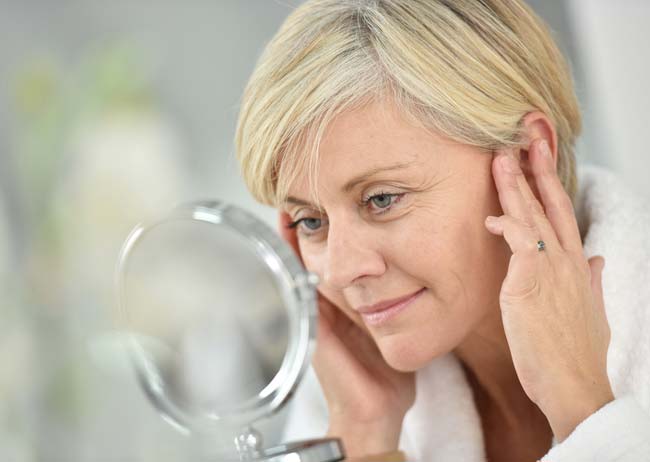Crow’s feet, those stubborn lines that appear on the outer corners of your eyes, whenever you smile or squint, are similar to any other type of lines and wrinkles that creep up on your body. Crow’s feet, also known as ‘laugh lines’ or ‘character lines’ are sometimes embraced, as they give the face character, according to some, but to other’s crow’s feet appear to be a sign of premature aging.
Character lines sometimes pose a problem for those looking to preserve their youthfulness, but many people also tend to think that crow’s feet makes a person appear more warm, natural and even wise. Most people develop crow’s feet, even at a very young age due to facial expressions such as squinting, laughing, and smiling.
Unlike other forms of wrinkles that appear on the face, crow’s feet typically form around the eyes, one of the most delicate parts of the dermis. Skin that surrounds the eyes are so fragile, there is an increased chance that wrinkles will develop, but various treatments are available to prevent them from progressing. Aside from being fragile, skin around the eyes also tend to be thinner than skin on other parts of the face.
Character lines can tell a number about a person. Aging sometimes causes crows feet to form naturally but there are additional factors that cause crow’s feet to form before their time. No matter what the reason, there are various treatments to help eliminate crow’s feet that have already formed and as well as diminishing or preventing them.
What Causes Crow’s Feet?
Crow’s feet are caused by intrinsic and extrinsic factors. If you know what’s causing your crow’s feet, knowing what to do for wrinkles around the eye becomes much easier. While the natural aging process as well as expressions such as squinting, laughing and smiling do contribute to further lines and wrinkles, outside factors do as well. Extrinsic causes contributing to the development of crow’s feet, such as smoking or sun exposure are reasons of developing crow’s feet early in life.
Other sources of wrinkling around the eye are due decreased collagen. The more collagen you have, the more plump and supple your skin look, which is why skin looks dull and increasingly slacker as we age. Various treatments are available to smooth out crow’s feet. However, the type of treatment you receive depends on factors, such as skin color and sensitivity.
The more you know about your skin and what causes it’s creasing, especially when they’ve appeared out of the blue, the better chances you have of banishing them the right way.
Treatment For Crow’s Feet
Treatment for crow’s feet runs the gamut from facial lotions and creams, injections, laser treatments and surgical incisions. In most cases, creams and injections are non-invasive and effective ways to lessen their appearance. Sometimes, however, severe lines and wrinkles form and a simple cream simply won’t suffice.
If you fall into the latter, then you should know that treatment is still available to you. Meeting with a dermatological professional will help you to gain insight on the causes of your crow’s feet and the best steps to be taken to reveal brighter, more youthful skin.
If crow’s feet are deeper than you’d like them to be, then various laser resurfacing treatments are available, which will take the top layer of dry, old skin and replace it with a vibrant, more glowing complexion.
Botox is one of the most popular forms of treatment for those seeking a quick and easy solution without the downtime. Made of a botulinum toxin that paralyses the muscles inability to contract, the lack of movement helps to decrease the amount of wrinkles in the skin. Botox is the only type of injection of it’s kind and is a very popular alternative to incisions and other forms of invasive surgery.
If you choose to undergo more aggressive treatment, a blepharoplasty helps to smooth out the wrinkles by an incision from the rim of the eyes to the temples. For those with deep wrinkles looking to smooth out the skin, blepharoplasty typically works, but may cause a permanent scar.
Other forms of treatment are available for ridding you of crow’s feet. However, if the most minimal treatment is ideal, then a cream is best. Most of the best creams for crow’s feet contain ingredients, such as retinols, peptides and hydroxy acids, which help with cell turnover and collagen development, and overall rejuvenation of the skin.
The causes and treatments for crow’s feet are plenty. Consider your current lifestyle and condition of your skin to determine the best options for you.

